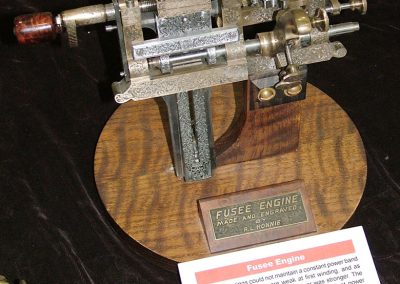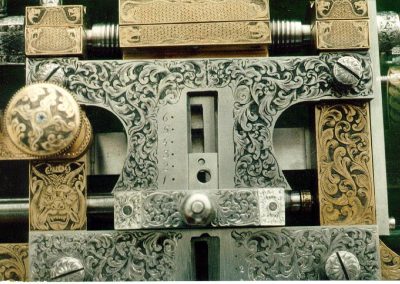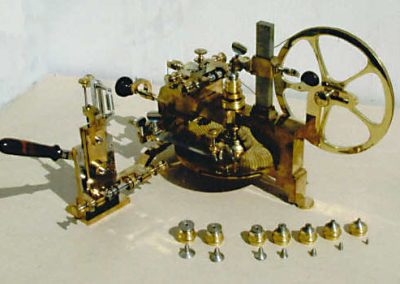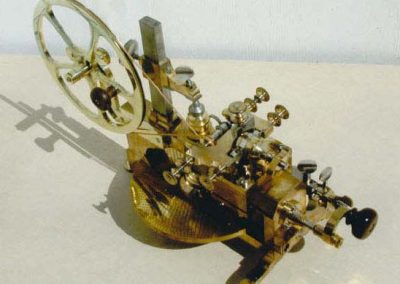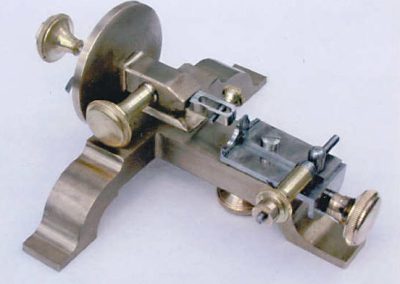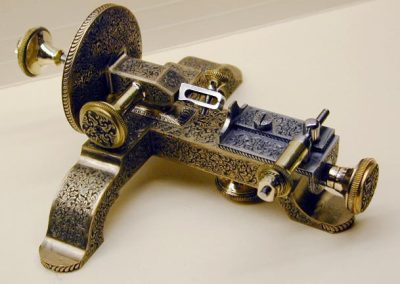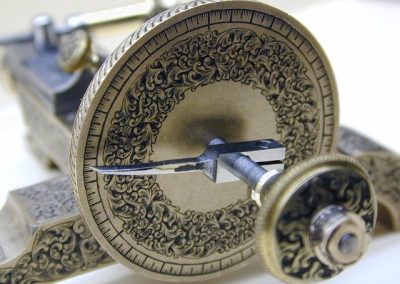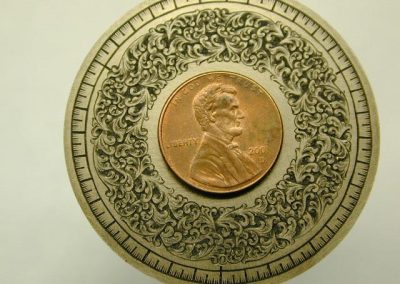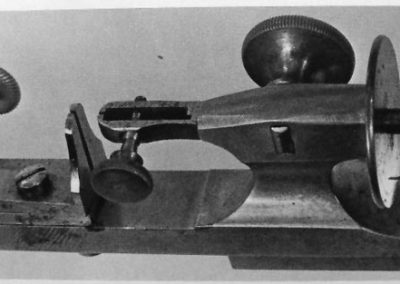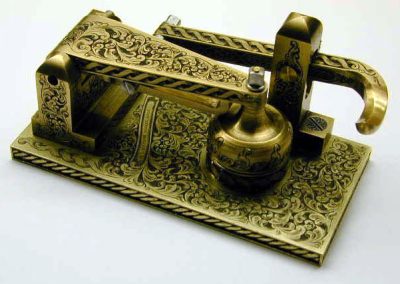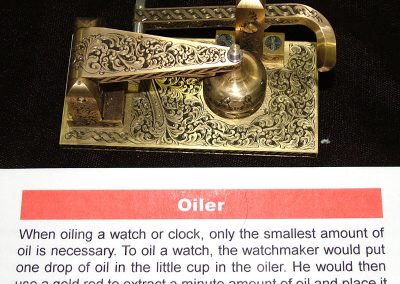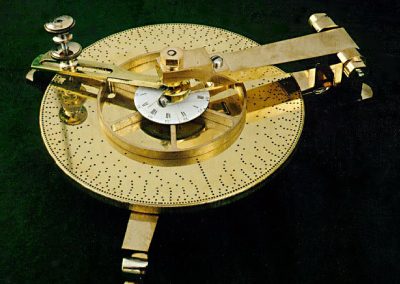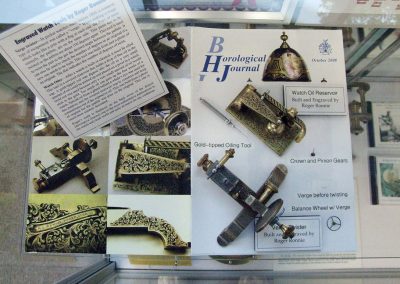Along with his engraving skills, Roger also became known to us through his reproductions of fine watch and clock making tools. Below are a number of examples of his work in this area.
Watch and Clock Making Tools
Fusee Engine
Roger’s fusee engine was entered in the NAWCC (National Association of Watch and Clock Collectors) international crafts show in 1998. It took first place in the tools category, and it also took first place in the engraving category. Obviously, this masterpiece combines many of Roger’s skills into one project. Roger’s fusee engine was also the first watch making tool to be featured on the cover of the NAWCC Journal.
Fusee Engine
The main purpose of this tool is to make a fusee, which is a spiral cone used in early pocket watches. There is also an attachment that cuts a small groove in the fusee to make a place for the chain to attach. This type of tool was originally made until about 1800.
Wheel Cutting Engine
This tool cuts the teeth for gears in a pocket watch. It was made with two different cutting heads. One cuts straight down, and the other cuts in an arch. Roger built this machine solely based on photos of original engines from the mid-1800’s.
Wheel Cutting Engine
The head that cuts in an arch can also be adjusted so that it cuts at an angle. This allows for the cutting of special teeth in an escapement wheel, for a verge style balance staff.
Verge Twister Machine
In pocket watches made before 1800, a common type of escapement used was called a “verge.” This photo shows Roger’s completed machine before engraving.
Verge Twister Machine
This photo shows the machine after Roger finished the engraving. When making a verge—which looks like a pole with a flag at each end—the flags, or more correctly, the pallets, are on the same side. This piece has to be twisted so the pallets are about 100 degrees apart.
Verge Twister Machine
The machine was used to twist the part to the exact degree you wish to use. It can also be used to check the number of degrees in an original, if a new one needs to be built.
Verge Twister Machine
Once again, Roger built this ornate machine using just a photo of an original. The dial indicates the number of degrees of twist.
Verge Twister Machine
This photo of the dial highlights the fine details of Roger’s engraving. A US penny lends a sense of scale.
Verge Twister Machine
This final black and white photo shows one of the original machines, which Roger worked from in order to make his own Verge Twister. Few originals would have been highly engraved like his machine.
Oiler
After a watch is built or cleaned, it must be oiled. This tool simply holds a little cup with a drop of oil inside. A gold rod was dipped into the oil so that a very small amount could be picked up and placed on a pivot in a watch.
Oiler
The gold rod was used because only a very small amount of oil would stick to the gold. Roger built this oiler using just a photo of the original. However, the quality of the original was poor, so he made this much more ornate version.
Dial Machine
This dial machine was also made from a photo of the original, circa 1790. This was a French tool that was used to mark the seconds and minutes on the face, and to lay out the Roman numerals for the hours. When all the marks were done, the upper arm was lifted up. The dial was not touched, for fear that a smudge would be made. The spoked wheel under the dial was lifted up, and the entire piece was placed in an oven to bake the enamel. After baking, the dial could be safely handled.
Return to Roger Ronnie’s main page.
This section is sponsored by:
Makers of precision miniature machine tools and accessories. Sherline tools are made in the USA.
Sherline is proud to confirm that Roger Ronnie uses Sherline tools in the production of some of his small projects.

